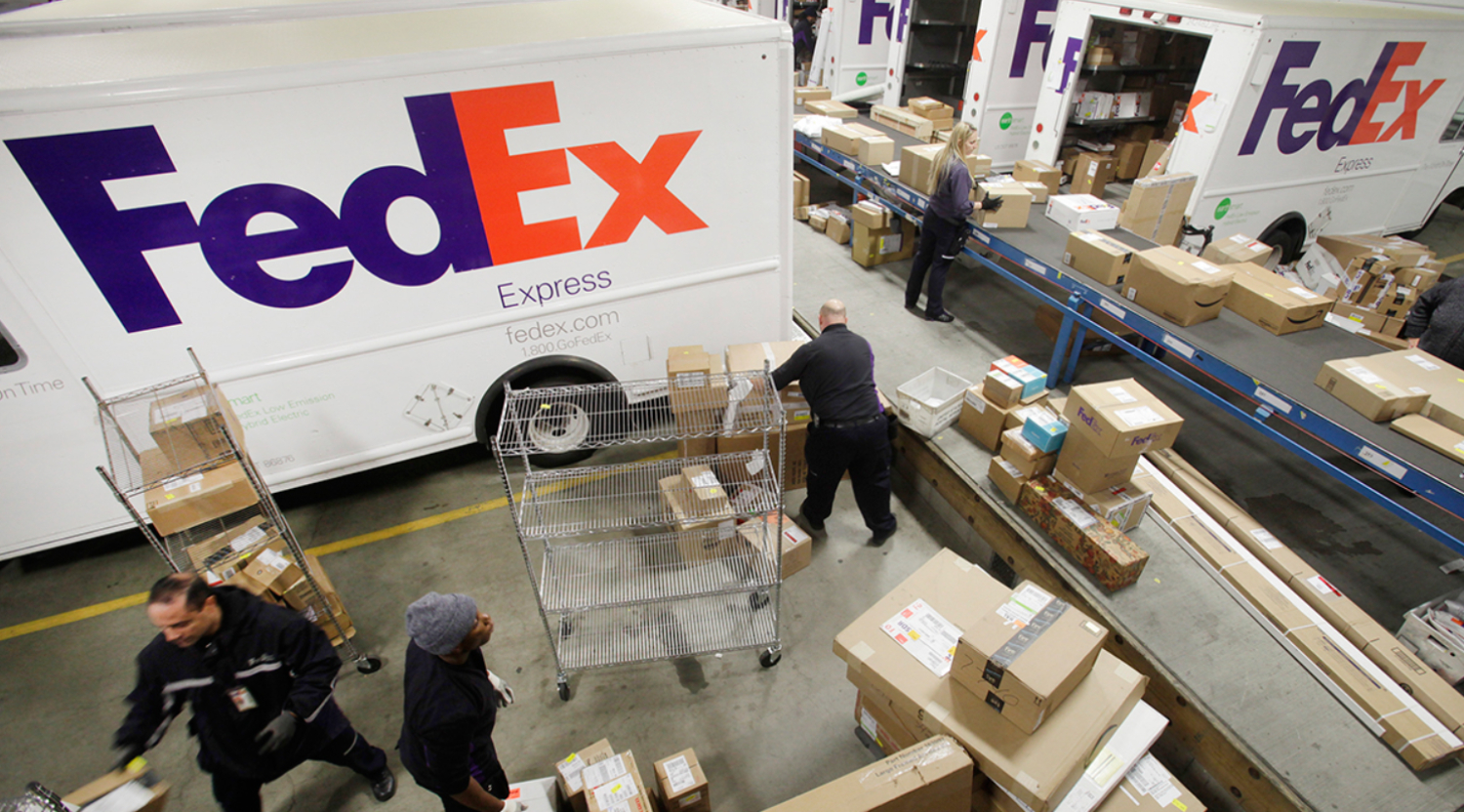FedEx is the organization behind the slogan “We live to deliver.” It has gained widespread recognition due to its vast network, cutting-edge technology, and dedication to client satisfaction.
FedEx Corporation, a global leader in the logistics and shipping industries, has revolutionized the way packages and documents are delivered worldwide. In this article, we will undertake a thorough SWOT analysis of FedEx, identifying its strengths, weaknesses, opportunities, and threats. We will also go over the important lessons that can be drawn from this shipping behemoth.
By going through this FedEx SWOT analysis, you can understand the factors contributing to FedEx’s successes and challenges. Companies can learn to enhance procedures and navigate the intensely competitive logistics business.
FedEx SWOT Analysis: About the Company
FedEx, also known as FedEx Corporation, is a global leader in logistics and shipping. It is transforming the way packages and documents are delivered worldwide. Since its establishment in 1971, FedEx has become one of the industry’s largest and most renowned names.
With an expansive network spanning over 220 countries and territories, FedEx offers a comprehensive suite of services. It offers express shipping, ground delivery, freight forwarding, and e-commerce solutions. The company’s unwavering dedication to technological advancement has yielded state-of-the-art tracking systems.
It provides automated sorting facilities and seamless integration of digital platforms, ensuring an exceptional customer experience. Renowned for its reliability, speed, and commitment to quality service, FedEx has garnered the trust and loyalty of millions of customers globally.
By prioritizing sustainability and continuous improvement, FedEx remains at the forefront of the logistics and shipping sectors, setting industry standards and driving innovation.
FedEx SWOT Analysis
Let’s look at the strengths, weaknesses, opportunities, and threats of FedEx in detail:
Strengths
Broad Global Network
FedEx has an expansive network that spans more than 220 countries and territories, enabling it to reach even the most remote destinations effortlessly. This extensive global presence grants FedEx a competitive edge over its adversaries.
Brand valuation and Reputation
The valuation of FedEx is more than $66 Billion in 2024. Over the years, FedEx has cultivated a robust brand reputation synonymous with dependability, swiftness, and top-notch service. Its iconic logo and easily recognizable branding have fostered customer trust and set it apart from competitors. It is one of the best FedEx strengths.
Diverse Range of Services
In addition to quick shipping, ground delivery, freight forwarding, and e-commerce solutions, FedEx provides a wide range of services. Due to its varied portfolio, the organization can meet various customer needs and adjust to changing market demands.
Innovative Technological Advancements
FedEx has constantly made technological investments throughout the years to improve its operations. They have sophisticated tracking systems in place as well as automated sorting facilities.
These have streamlined business processes and allowed clients to receive real-time shipment information. Moreover, FedEx is in touch with Tesla to acquire more Electric Trucks in the future.
Fast Delivery
FedEx is renowned for its fast delivery services. It offers overnight delivery to its valued customers.
Weaknesses
Increasing Fuel costs
As a transportation company, FedEx is highly dependent on fuel prices. Fluctuations in oil prices can significantly impact its operating costs and profitability.
High Running Expenses
Due to its extensive network and cutting-edge technology, FedEx incurs costs. The company faces pressure as it manages a fleet of aircraft, trucks, and sorting facilities while continuously investing in technological advancements.
Excessive reliance on the American market
A corporation should avoid becoming unduly reliant on a single market. Political, economic, and societal hazards are present.
Exposure to the economic situation
The global economy’s health has a big bearing on FedEx’s operations. Reduced consumer spending and trade volumes during recessions can harm a company’s revenue and profitability.
Opportunities
E-commerce Expansion
The exponential rise of e-commerce presents a significant chance for FedEx to thrive. As more and more consumers embrace online shopping, the need for dependable and efficient shipping services is on the rise.
FedEx can take advantage of this trend by expanding its e-commerce offerings and forming partnerships with online retailers.
See also: Lazada Marketing Strategy: Everything to Know About Success
Innovation
FedEx occasionally introduces technologies that streamline the delivery process. It has gained a reputation for its customers need oriented innovations.
Commitment to Sustainability
Given the escalating environmental worries, there is a rising call for sustainable shipping solutions. FedEx has a chance to capitalize on this by putting its resources into eco-technologies like vehicles and renewable energy sources. This move would help lower their carbon emissions and appeal to customers who prioritize consciousness.
Exploring Emerging Markets
FedEx can further extend its global reach by targeting emerging markets with flourishing economies. These markets hold untapped potential for logistics and shipping services. FedEx can establish a robust presence by leveraging its expertise and extensive network.
Merger and Acquisition
FedEx has acquired many companies in order to increase its efficiency, for example-it has acquired Shoprunner.
Threats
Recession
There is a growing concern about a global recession. A recession might seriously affect the company’s revenues and impair its operations.
Fierce Competition
The shipping and logistics sector is characterized by fierce competition as major players like UPS, DHL, and Amazon Logistics vie for a larger market share. This intense competition often triggers price wars and can erode profit margins.
Regulatory Hurdles
FedEx operates in multiple countries, each with its own unique set of regulations and compliance requirements. Adapting to evolving regulations, customs procedures, and trade policies can present challenges and increase the complexity of operations.
Key Lessons to Learn
Cultivate a Strong Brand
FedEx’s success can be attributed, in part, to its strong brand image. Companies should focus on building a recognizable brand that reflects their values, consistently delivers quality, and sets them apart from competitors. A strong brand helps establish trust and loyalty among customers.
Check this out: Full Comprehensive Analysis of Under Armour: SWOT Analysis and Key Insights
Adapt to Market Changes
Due to its broad range of services, FedEx can adjust to shifting market circumstances. Businesses should make an effort to be flexible and responsive to changing consumer needs. It entails growing their product line and looking for fresh opportunities to stay ahead of the competition.
Embrace Technological Advancements
Companies should prioritize investing in technology, just like FedEx did. By embracing innovation and cutting-edge solutions, businesses can increase productivity, boost customer satisfaction, and gain a competitive edge.
FAQs
What is FedEx's SWOT analysis?
The FedEx SWOT analysis identifies its advantages (global network, strong brand), disadvantages (high operating expenses, sensitivity to economic volatility), possibilities (extension into emerging areas, development in e-commerce), and threats (intense competition, regulatory issues).
What is FedEx's competitive strategy?
FedEx bases its competitive strategy on offering top-notch customer service, operational excellence, and cutting-edge technological solutions. They prioritize efficiency, dependability, and speed in their global logistics and transportation networks. Search for 'FedEx analysis' to learn more about its strategy. FedEx seeks to stand out and keep a competitive edge in the market by making ongoing infrastructure investments and embracing digital transformation.
What problems does FedEx face?
FedEx encounters challenges, including competition from other shipping companies, increasing fuel expenses, labor disagreements, and the continual requirement to invest in technology and infrastructure to meet customer expectations.
Who is FedEx's biggest competitor?
UPS (United Parcel Service) is FedEx's biggest competitor in the package delivery industry. It is offering similar services and competing for market share globally.
Conclusion
The FedEx SWOT analysis uncovers its advantages, disadvantages, prospects, and risks within the shipping industry. Leveraging its expansive worldwide network, advancements in technology, and robust brand reputation, FedEx has positioned itself as a frontrunner in logistics.
Nevertheless, it encounters obstacles like elevated operational expenses, fierce competition, and intricate regulatory frameworks. By studying FedEx’s tactics and prioritizing technology, branding, flexibility, and sustainability, enterprises can effectively navigate the shipping industry and flourish in a dynamic market environment.
Read also: UPS SWOT Analysis: How They Dominate the Courier Industry?




















